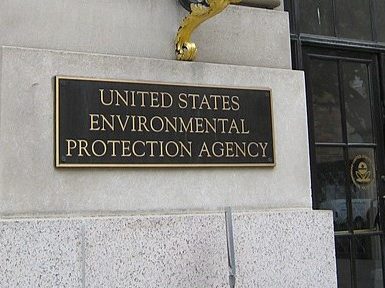The Arizona Board of Regents (ABOR), which oversees Arizona State University, Northern Arizona University and University of Arizona, released its annual report last week. The report outlines how state’s public institutions of higher learning have grown enrollment, adopted a new tuition structure, further invested in filling shortages in the healthcare sector, and maintained a competitive edge in research and development over the last year.
The report says that Arizona’s public universities are operating on a single premise that “all Arizonans should benefit from our universities,” showcasing work and outcomes this past year to build a capable workforce for a growing state, address the state’s greatest challenges, and expand access to and the affordability of higher education.
Workforce development
In the modern economy, universities — particularly research universities like ASU, UArizona, and NAU — are recognized as catalysts for economic growth, not only because of their expansive investments in research and development, but because higher education is an incredible investment in human capital. College graduates not only make far more on average than their non-college-educated peers, they also enter the workforce equipped with the soft and hard skills to hit the ground running on day one.
Arizona’s workforce needs only continue to grow as advanced manufacturing and the tech sector take off in the state, with massive investments from companies like TSMC and Intel, and as new venture capital firms like AZ-VC take root. As such, the board and universities have prioritized workforce development — and building the state’s domestic workforce — so that Arizonans and others attending in-state universities can find work in-state rather than moving out of town.
“Businesses small and large across our state want the private and public sectors to work together to build stronger workforce pipelines,” Arizona Chamber of Commerce & Industry President and CEO Danny Seiden said. “ABOR and our Arizona universities play an indispensable role in helping Arizona build and retain a well-equipped workforce to meet the demands of today’s economy.”
Some notable accomplishments in the past year that further the universities’ mission of building and supporting a next-generation Arizona workforce include:
- A new data portal and bolstered outreach initiatives, which helped increase the number of students who filled out the FAFSA (Free Application for Federal Student Aid) by 6.1%.
- Maintenance of a seamless transfer program from the state’s community colleges to their public universities, with more than 9,700 students transferring to an in-state university in the past year.
- Expanding access through the Arizona Promise Program – During the 2022-2023 academic year, the program made college accessible for more than 19,000 Arizona Pell Grant recipients.
- Arizona’s public universities provided more than $1 billion in financial aid to students in fiscal year 2022.
- The universities continued to address the teacher shortage by investing in future teachers. The Arizona Teachers Academy served over 3,250 students in fiscal year 2023.
Addressing the state’s greatest challenges
One of the largest victories for ABOR this year was Arizona State University’s establishment of a medical school. In June, the state’s largest public university announced the creation of the ASU School of Medicine and Advanced Medical Engineering. “An interdisciplinary approach will bring together health sciences from across the university to prepare students to address complex healthcare problems,” said Nancy Gonzales, ASU’s executive vice president and provost.
ASU’s newly minted medical school comes in addition to an expanded partnership between the school and the Mayo Clinic, a top-ranked American research hospital. These expanded investments in healthcare promise to grow the nursing workforce, and “bridge engineering and medicine to advance problem solving and address complex healthcare problems.” At the core of this new partnership is the interdisciplinary mindset President Michael Crow continues to champion at the school he’s led for nearly a quarter century.
“We decided to build as many transdisciplinary, interdisciplinary, multidisciplinary, and post-disciplinary entities as we possibly could, not just for the sake of doing it, but for the sake of advancing and broadening out human knowledge, human training, human learning, all these things, more pathways for learners,” Crow said in an interview last year. Now, ASU is applying this philosophy to healthcare.
In addition to the foundation of ASU’s new medical school, UArizona plans to double the number of graduates from their medical school, and is forging a closer relationship with Banner University Medical Center in Tucson and Phoenix, making it a fully integrated medical center. This change will expand the school’s capacity and bring together bright minds in the medical profession. NAU will announce its plans to address the healthcare shortage in September.
Furthermore, state universities continue to invest in targeted research and development.
ASU’s Julie Ann Wrigley Global Futures Laboratory is working to address the state’s water woes, as well as create new technologies that can remove chemical pollutants like PFAS from water supplies. NAU’s investments in community health research aim to address health inequities and prepare future healthcare professionals. UArizona is putting funds toward “an initiative designed to reduce the burden of diet-sensitive disease in vulnerable Arizona communities using culinary medicine.”
Expanding access and affordability
The board adopted a promise to Arizona, “to ensure access for qualified residents of Arizona to undergraduate and graduate institutions; promote the discovery, application and dissemination of new knowledge; extend the benefits of university activities to Arizona citizens outside the university; and maximize the benefits derived from the state’s investment in education.” This promise is what drives the state’s universities to focus both on high quality academics and expanded access, rather than pursuing one goal at the expense of the other.
The Regents recently approved a multiple-year tuition model to provide greater tuition predictability for Arizona families. The new structure also provides a lever for the board to suspend any announced tuition increases if the state of Arizona increases General Fund appropriations by a similar amount for universities.
“Our intention is to reduce confusion about tuition and fees and — most of all — provide predictability for students so they know what to expect when budgeting for college,” Manson said.
In addition to the pursuit of predictability for students who are paying for college, UArizona, NAU, and ASU made strides to increase enrollment. More than 220,000 students are now enrolled in the state’s public university system, setting the highest enrollment level in Arizona history. In 2022, the schools awarded a combined 16,000 graduate degrees, and 36,000 undergraduate degrees.
















Add comment